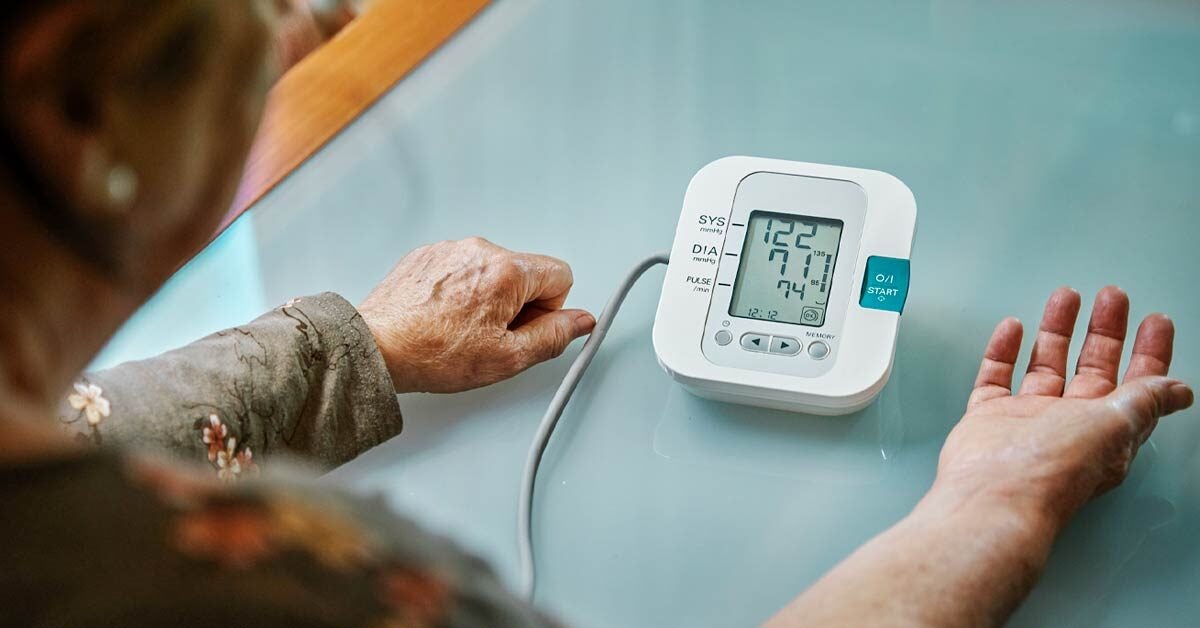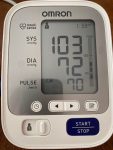The top number, called the systolic pressure, represents the pressure when your heart beats and pumps blood. The bottom number, called the diastolic pressure, represents the pressure when your heart rests between beats. Your blood pressure is considered high if it’s consistently above 140/90 mmHg.
High blood pressure usually doesn’t have symptoms, so it can go unnoticed until it causes problems such as heart disease or stroke. If you have high blood pressure, you can lower it by making lifestyle changes and taking medication.
If you have high blood pressure, or hypertension, you may be wondering what the numbers on your blood pressure readings mean. The top number, or systolic pressure, is the amount of pressure in your arteries when your heart contracts and pumps blood through your body. The bottom number, or diastolic pressure, is the amount of pressure in your arteries when your heart is at rest between beats.
Normal blood pressure is a systolic reading of less than 120 and a diastolic reading of less than 80. If either of these numbers is higher, you have high blood pressure. High blood pressure puts you at risk for serious health problems like heart disease and stroke, so it’s important to get it under control.
There are a few things you can do to lower your blood pressure: exercise regularly, eat a healthy diet rich in fruits and vegetables, maintain a healthy weight, limit salt intake, and avoid tobacco use. If lifestyle changes aren’t enough to lower your blood pressure to a healthy level, medication may be necessary. Work with your doctor to find the best treatment plan for you.
What is a Normal Blood Pressure Reading?
Is 118 76 A Good Blood Pressure?
It’s normal for blood pressure to fluctuate throughout the day, and it can be affected by factors like stress, caffeine intake, exercise, and dehydration. That said, 118/76 is considered a healthy blood pressure reading.
Is 120 76 A Good Blood Pressure?
There is no one definitive answer to this question as blood pressure is unique to each individual. However, according to the American Heart Association, a reading of 120/76 is considered normal blood pressure.
Is 76 a Good Blood Pressure?
No definitive answer exists as to what blood pressure is considered “good.” However, according to the American Heart Association (AHA), a reading of less than 120/80 mmHg is ideal. Anything above that range is considered elevated and, depending on how high the numbers are, can be indicative of different stages of hypertension.
That said, a single blood pressure reading of 76 is not enough information to make any conclusions about one’s overall health.
Is 118 75 A Good Blood Pressure?
A blood pressure reading of 118/75 is considered to be within the “normal” range. This means that your blood pressure is not too high or too low and is unlikely to cause any health problems. However, it’s still important to monitor your blood pressure levels and see a doctor if you have any concerns.


Credit: www.healthline.com
119/76 Blood Pressure Good Or Bad
Your blood pressure reading of 119/76 is in the normal or optimal range. This means that your heart is pumping blood at a healthy rate and your blood vessels are resisting the force of blood flow well. maintain a healthy lifestyle to keep your blood pressure in this range.
119/76 Blood Pressure Pregnant
If you’re pregnant and have a blood pressure reading of 119/76, don’t panic! This is considered to be within the “normal” range for pregnancy. However, it’s still important to monitor your blood pressure throughout your pregnancy, as high blood pressure can be a sign of preeclampsia (a serious condition that can occur during pregnancy).
So if you have any concerns, be sure to speak with your doctor or midwife.
What is a Dangerous Low Blood Pressure for a Woman
When it comes to blood pressure, there is no one-size-fits-all. What is considered low blood pressure for one person may be considered high blood pressure for another. That said, there are some general guidelines doctors use to help determine if someone’s blood pressure is too low.
For adults, a systolic blood pressure (the top number) of less than 90 millimeters of mercury (mm Hg) or a diastolic blood pressure (the bottom number) of less than 60 mm Hg is generally considered dangerous.For women, the numbers may be slightly different. A study published in the journal Hypertension found that for postmenopausal women, a systolic blood pressure of less than 100 mm Hg was associated with an increased risk of death from cardiovascular disease and other causes.
And a diastolic blood pressure of less than 70 mm Hg was associated with an increased risk of death from all causes.If you think your blood pressure may be dangerously low, it’s important to see a doctor right away. Low blood pressure can cause lightheadedness, dizziness, and even fainting.
It can also lead to serious complications like shock and heart failure if left untreated.
110/60 Blood Pressure Female
Your blood pressure is said to be “normal” if it’s below 120/80. From age 20, women’s risk of cardiovascular disease (which includes heart attacks and strokes) begins to rise. A woman’s chance of having a heart attack or stroke doubles each decade after age 55.
And for women over 65, the rate is three times that of men the same age. So it’s important to know your numbers and take steps to keep your blood pressure in check as you get older.For most people, blood pressure tends to increase with age, mainly because the arteries stiffen and narrow with time.
This raised blood pressure puts extra strain on your heart and vessels, which can lead to a host of problems such as heart attacks and strokes.So what should you do if your blood pressure is getting up there? First, don’t panic!
Many things can affect your readings, such as how active you are that day or whether you just had a big meal. If your number is consistently high—say, 140/90 or higher—make an appointment with your doctor to discuss treatment options. They may recommend lifestyle changes like exercise and eating a healthier diet, or they may prescribe medication to help lower your blood pressure.
How to Lower Blood Pressure
If you’re one of the millions of Americans with high blood pressure, there are things you can do to lower it. High blood pressure, also called hypertension, puts strain on your arteries and heart. Over time, this can lead to serious health problems such as heart disease and stroke.
There are many different ways to lower blood pressure. Some people may need medication while others may be able to make lifestyle changes that will help. Here are some things you can do to lower your blood pressure:
-Exercise regularly. Exercise is a great way to reduce stress and tension which can contribute to high blood pressure. -Eat a healthy diet.
A diet rich in fruits, vegetables, and whole grains can help keep your blood pressure down. Avoid processed foods, salt, and saturated fats. -Reduce stress levels.
Stress can cause your blood pressure to rise so finding ways to relax and de-stress is important. -Quit smoking cigarettes. Smoking is a major risk factor for high blood pressure so quitting is essential for lowering your numbers.
Making even small changes in your lifestyle can have a big impact on your blood pressure readings so don’t hesitate to get started today!
Normal Blood Pressure
Your blood pressure is considered normal if it’s below 120/80 mm Hg. If your blood pressure is above this level, you may have high blood pressure (hypertension). Normal blood pressure is essential to life because it forces blood through your arteries to deliver oxygen and nutrients to the rest of your body.
High blood pressure is a major risk factor for heart disease, stroke, and kidney disease. That’s why it’s important to keep your blood pressure under control. You can do this by eating a healthy diet, maintaining a healthy weight, getting regular exercise, and avoiding tobacco use.
Conclusion
High blood pressure, also known as hypertension, is a common condition in which the force of your blood against your artery walls is too high. Blood pressure is measured in two numbers, systolic and diastolic. Systolic is the top number and measures the pressure when your heart beats.
Diastolic is the bottom number and measures the pressure when your heart rests between beats.If left untreated, high blood pressure can lead to serious health problems such as stroke, heart disease, or kidney failure. There are many things you can do to lower your blood pressure, including eating a healthy diet, exercising regularly, and reducing stress.

